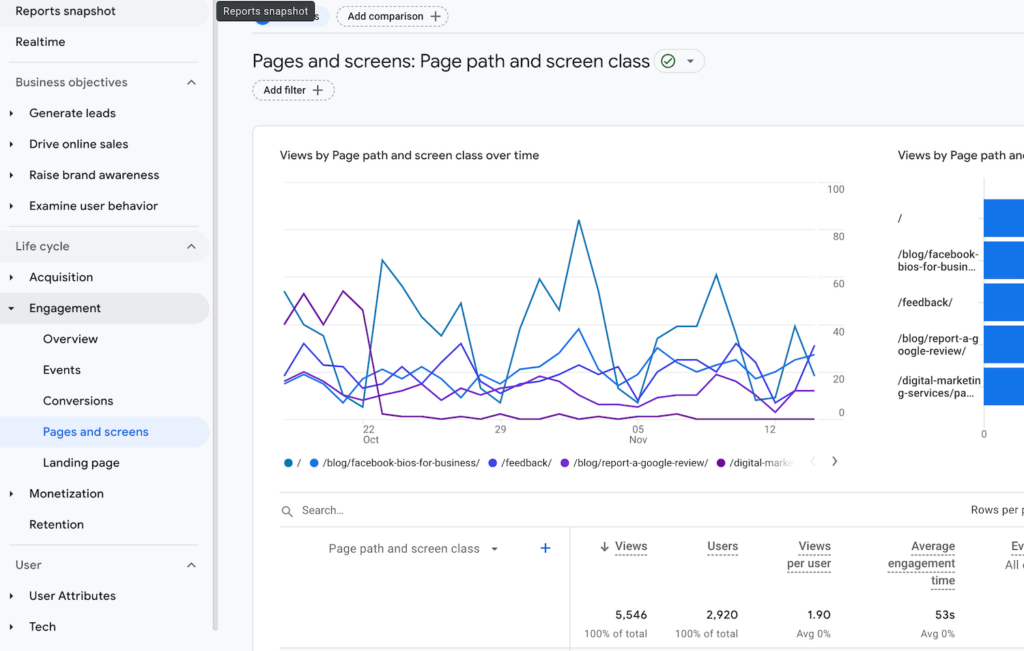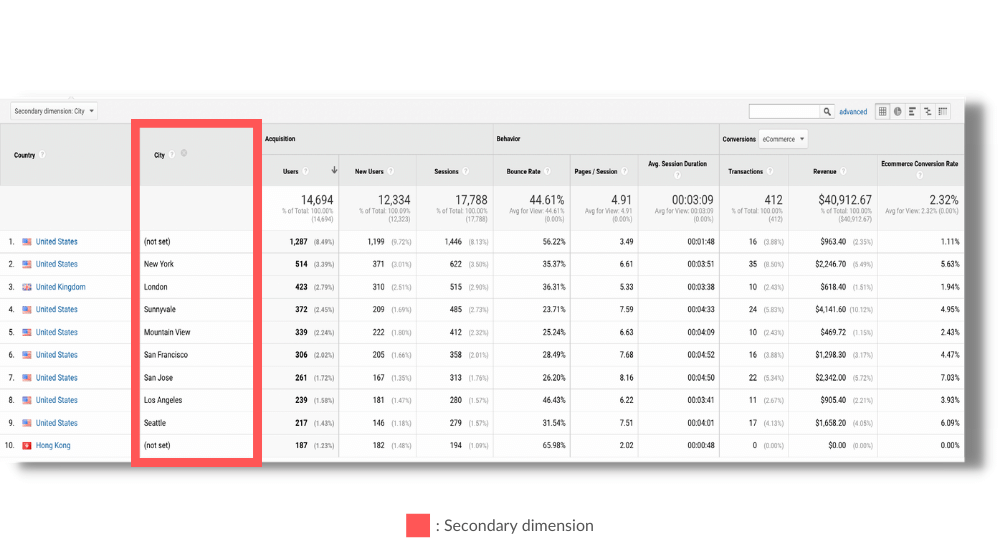Navigating the Midst of Secondary Measurement in Google Analytics: A Comprehensive Expedition on Its Functionality
Second dimensions, though seemingly simple at initial glance, nurture a wealth of untapped possible waiting to be taken advantage of. As we embark on this trip to discover the nuanced performance of additional dimensions, we will certainly discover exactly how this feature can brighten patterns, reveal correlations, and eventually pave the means for informed decision-making in the electronic landscape (what is a “secondary dimension” in google analytics?).
Recognizing Secondary Measurements in Google Analytics

Recognizing just how second dimensions work is crucial for leveraging the complete power of Google Analytics. These measurements aid you address a lot more complicated questions about user behavior and the performance of your web site content and advertising initiatives. For instance, you can utilize additional measurements to evaluate which tools or web browsers are most generally made use of by site visitors that buy, or to compare the bounce rates of various website traffic sources. By incorporating primary metrics with secondary measurements, you can obtain useful insights that drive notified decision-making and optimization approaches - what is a “secondary dimension” in google analytics?.
Leveraging Additional Measurements for Data Evaluation
Building upon the fundamental understanding of just how additional dimensions improve data evaluation in Google Analytics, the utilization of these added layers of info ends up being paramount in removing useful understandings for educated decision-making and optimization methods. By leveraging second dimensions, experts can dig deeper right into the efficiency metrics by including more context to the primary measurements, thus revealing hidden patterns and relationships that might not appear in the beginning look. This deeper degree of evaluation allows businesses to much better understand user habits, identify trends, and determine areas for enhancement.
Furthermore, second dimensions give a more comprehensive sight of the data, permitting segmentation based on various parameters such as demographics, tools, website traffic sources, and extra. This segmentation promotes a more granular evaluation, allowing companies to customize their projects and methods to particular audience sections for boosted targeting and personalization. Basically, the tactical use additional measurements encourages organizations to make data-driven choices that drive development and success in the electronic landscape.
Advanced Methods for Second Measurement Implementation
Checking out complex approaches to harness the complete capacity of secondary dimensions in Google Analytics raises the depth and class of information analysis for critical decision-making. One sophisticated method for executing second measurements is the usage of personalized measurements. Additionally, combining second dimensions with sophisticated sectors can give even more granular insights by using numerous layers of segmentation to the data.
Interpreting Insights Via Additional Measurements

When analyzing understandings via second dimensions, it is vital to consider the context of the data and just how different measurements communicate with each other. For example, understanding which details website traffic sources result in higher conversion prices or recognizing which tools individuals like for making purchases can offer straight from the source workable understandings for maximizing marketing campaigns and improving total internet site performance. By very carefully checking out the information with secondary dimensions in mind, services can make informed decisions that drive meaningful outcomes and enhance their electronic existence.
Optimizing Efficiency With Second Dimensions

One key way to enhance performance with additional measurements is by segmenting information a lot more granularly. This enables you to isolate certain aspects that might be affecting your metrics and obtain a far better understanding of what drives success or failing in your digital initiatives. By incorporating secondary dimensions such as 'device classification' and 'touchdown page,' you can pinpoint which gadget kinds are most reliable for specific landing pages, allowing you to tailor your techniques accordingly.
Furthermore, utilizing additional measurements can aid you recognize patterns, patterns, and correlations that may not appear when analyzing data with key dimensions alone. This deeper degree of analysis can bring about even more informed decision-making and ultimately boost the total performance of your web site or electronic advertising projects.
Final Thought
Finally, additional measurements in Google Analytics play a vital duty in improving data evaluation and giving deeper insights right into internet site efficiency. By utilizing advanced strategies and analyzing the data effectively, businesses can enhance their techniques and boost overall efficiency. Understanding the capability of additional dimensions is important for making informed decisions and driving success in the electronic landscape.
By leveraging additional dimensions, analysts can delve deeper right into the performance metrics by including more context to the key dimensions, hence uncovering concealed patterns and correlations that may not be noticeable at first look. One innovative method for implementing additional measurements is the usage of custom dimensions.Having understood sophisticated strategies like custom dimensions and regex for secondary dimension execution in Google Analytics, the following vital action is interpreting the important insights derived via these innovative information my review here division methods. Interpreting understandings with second dimensions includes examining the relationships in between the secondary and key dimensions selected, revealing patterns, fads, and correlations that may not be promptly noticeable when looking at the information in its entirety.When translating understandings through secondary dimensions, it is vital to take into consideration the context of the information and exactly how various measurements engage with each various other.